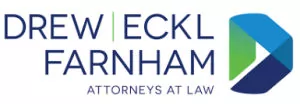The reptile theory, attributed to David Ball and Don Kennan, who co-authored Reptile: The 2009 Manual of the Plaintiff's Revolution (Balloon Press, 2009), is no longer used just in personal injury or products liability cases. Insureds' attorneys are increasingly utilizing the theory in first-party property cases, especially cases involving arson and claims of bad faith. As a result, witnesses for insurance companies need to be prepared to respond to such tactics in depositions and at trial.
One goal of the reptile theory is to structure the case in such a way that it switches a juror's brain into survival mode when he or she is deciding the case. Ball and Kennan, supra, at 17. Rather than deciding the case on logic and admissible evidence, plaintiff's attorneys want the jury to place themselves in the position of the insured and feel threatened regarding a potential risk of harm. As a result, the jurors find themselves asking "what if this could happen to me?" rather than focusing on whether the plaintiff was actually harmed by the defendant.
In a first-party property case, successful use of the reptile theory involves the insured's attorney not arguing about whether the insurer properly denied the claim, but arguing about what could happen to the jurors if their insurance claim was denied. So how do attorneys accomplish this in a first-party property case? By asking questions to the adjuster or special investigator that are posed in such a way to make the adjuster or special investigator appear foolish or "disingenuous" if he or she disagrees with attorney's question. Insured's attorney will also try to show the jury that the insurance company, by its adjusters, violated some applicable rule. In arson and bad faith cases, the "rule" offered by attorneys is the jurisdiction's unfair claims practices act.
For example, let's take a first-party property case in which the insurer has denied a fire claim on the basis that that the fire was incendiary, and the insured had both the opportunity and motive to have set the fire. The insured sues claiming the insurer denied the claim in bad faith. In a traditional insurance bad faith case, the plaintiff's attorney will focus on evidence to establish that the insurer unreasonably and without a proper basis denied the insured insurance coverage. In a bad faith case in which the plaintiff's attorney is utilizing the reptile theory approach, the attorney will focus on the unfair claims practices act that generally provides:
- the insurance company is required to promptly and fairly investigate the claim;
- the insurance company must look for evidence to find coverage;
- the insurance company must give the insured's interest the same regard as the insurer's interest;
- the insurance company must communicate and explain coverage decisions to the insured promptly; and
- the insurance company must fully pay a covered claim.
In the deposition of an insurance adjuster in which the insured's attorney is going to use the reptile theory to prosecute the case, the attorney will present a series of questions regarding what the attorney will attempt to describe as plain and simple rules, make the questions regarding the rules appear to be difficult or impossible for the adjuster to disagree with, and get the adjuster to acknowledge the purpose of the rules is to protect insureds from improper denials.
In an arson/bad faith case, a line of questions and answers could be as follows:
Q: You would agree that adjusters should act with integrity when conducting investigations?
A: Yes.
Q: Do you think that you were acting with integrity by not telling the insureds that they were suspected of intentionally setting fire to their home when you took their recorded interviews?
A: I guess not.
Q: You agree that the insurance company owes a duty of good faith and fair dealing to the insured when adjusting a claim, right?
A: Yes.
Q: And you would also agree that the insurance company is required to promptly and fairly investigate the claim?
A: Yes.
Q: And would you agree that taking seven months to deny the claim was not prompt?
A: I guess not.
By this line of questioning, the attorney obtained key admissions in support of the bad faith claim. The adjuster failed to explain his actions, which could have been that he did act with integrity, because at the time of the recorded interview his suspicions that the insureds set the fire had not been confirmed as debris samples had not yet been tested. In addition, the investigation could have taken seven months due to delays by the insureds in submitting to examinations under oath and producing financial information requested by the insurance company, which was needed before a final coverage decision could be made.
If the insured's attorney is successful in obtaining key admissions in the deposition, the witness' deposition testimony will be the witness' trial testimony. To counter this technique, it is critical for defense counsel to prepare the insurance company witnesses for deposition. So how does defense counsel prepare a witness for reptile theory questioning? Admittedly, it is easier said than done in large part because the questions asked by the insured's attorney appear to be commonsense principles that a witness would not want to dispute.
First, the defense counsel must explain the reptile theory to the witness. As demonstrated, responding to the reptilian questioning technique requires the adjuster to avoid using instinctive responses to agree with abstract rules and commonsense principles. The witness must understand that questions are unfair, vague and broad, and fail to include the specific facts and circumstances of the claim at issue.
Conducing mock deposition questions is imperative. Defense counsel must practice questions and answers until the adjuster is confident in his or her responses to reptile questions. The key is to teach the adjuster to avoid agreeing with broadly stated principles and that a simple "yes" or "no" will not suffice as a response to those questions. The adjuster's response should include any exceptions or practical concerns that are present in the case. As we know, not every case is "black and white," and particularly with insurance claims, each claim is investigated and adjusted based on the facts and circumstances of each claim. As a result, appropriate responses to "rules" questions can be "that question is really broad," "it depends," "not necessarily" or "yes, but that has nothing to do with this case." Other responses could be "if possible and reasonable, yes" or "I generally agree with that statement, but that has nothing to do with this case." The adjuster must be further prepared to explain why "it depends" or why "that has nothing to do with the case."
For example, in the scenario above, instead of simply agreeing that an insurance company is required to promptly and fairly investigate the claim, the adjuster should have answered "yes, but whether an investigation is prompt and fair depends on the circumstances of each claim." Similarly, in response to whether the seven-month investigation was not prompt, the adjuster should have answered "not in this case," then explained his reasons why it took seven months to deny the claim. Providing explanations regarding the adjuster's underlying thoughts about the investigation and his or her motivation or reasoning in taking any action, will make it easier for a jury to understand what happened with the specific case and believe the adjuster.
Due to the success of plaintiff's attorneys utilizing the reptile theory in other cases, defense counsel handling a first-party property case must include preparing the insurance company's witnesses as preparation is the key to neutralizing this litigation technique.
The content of this article is intended to provide a general guide to the subject matter. Specialist advice should be sought about your specific circumstances.

